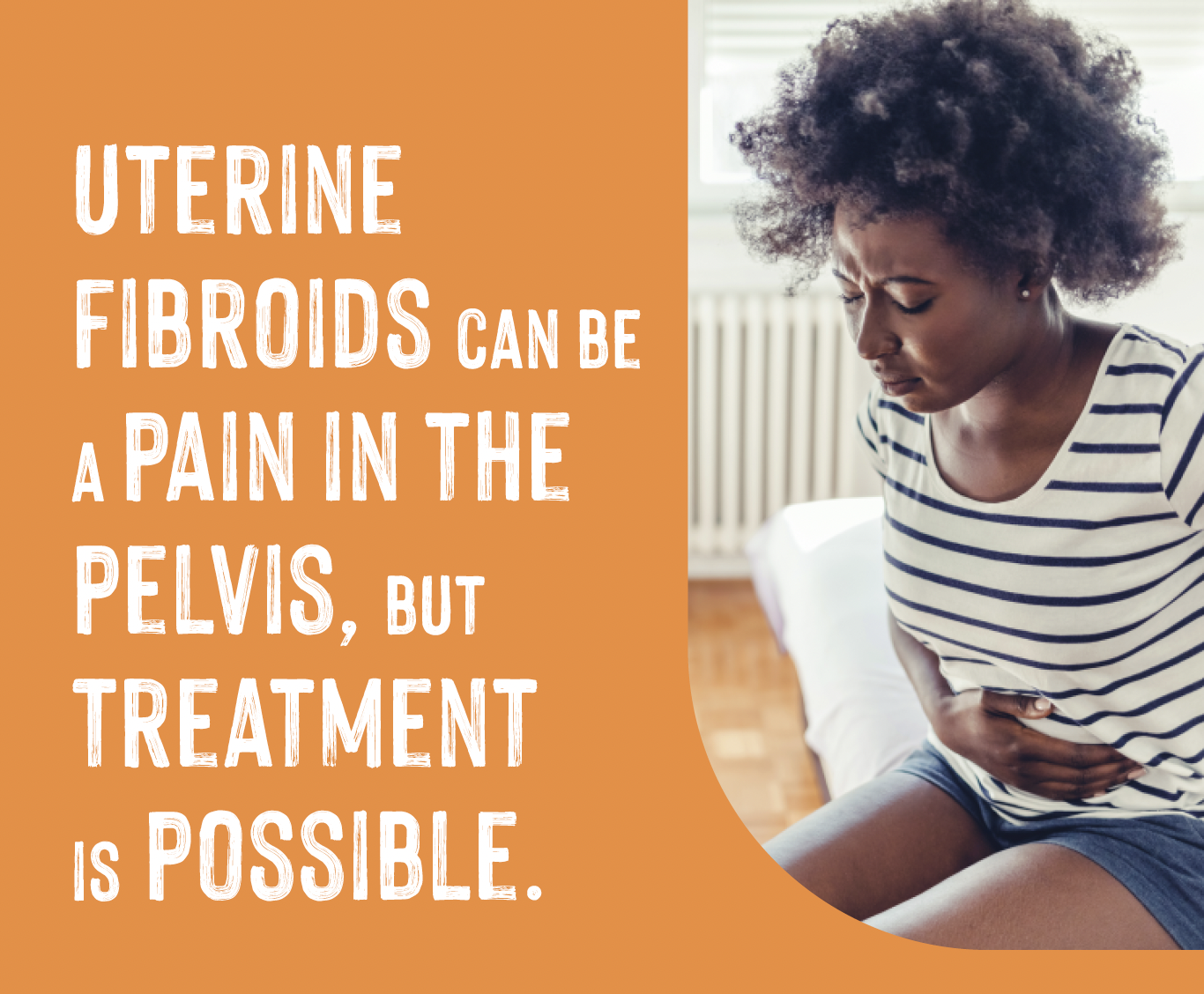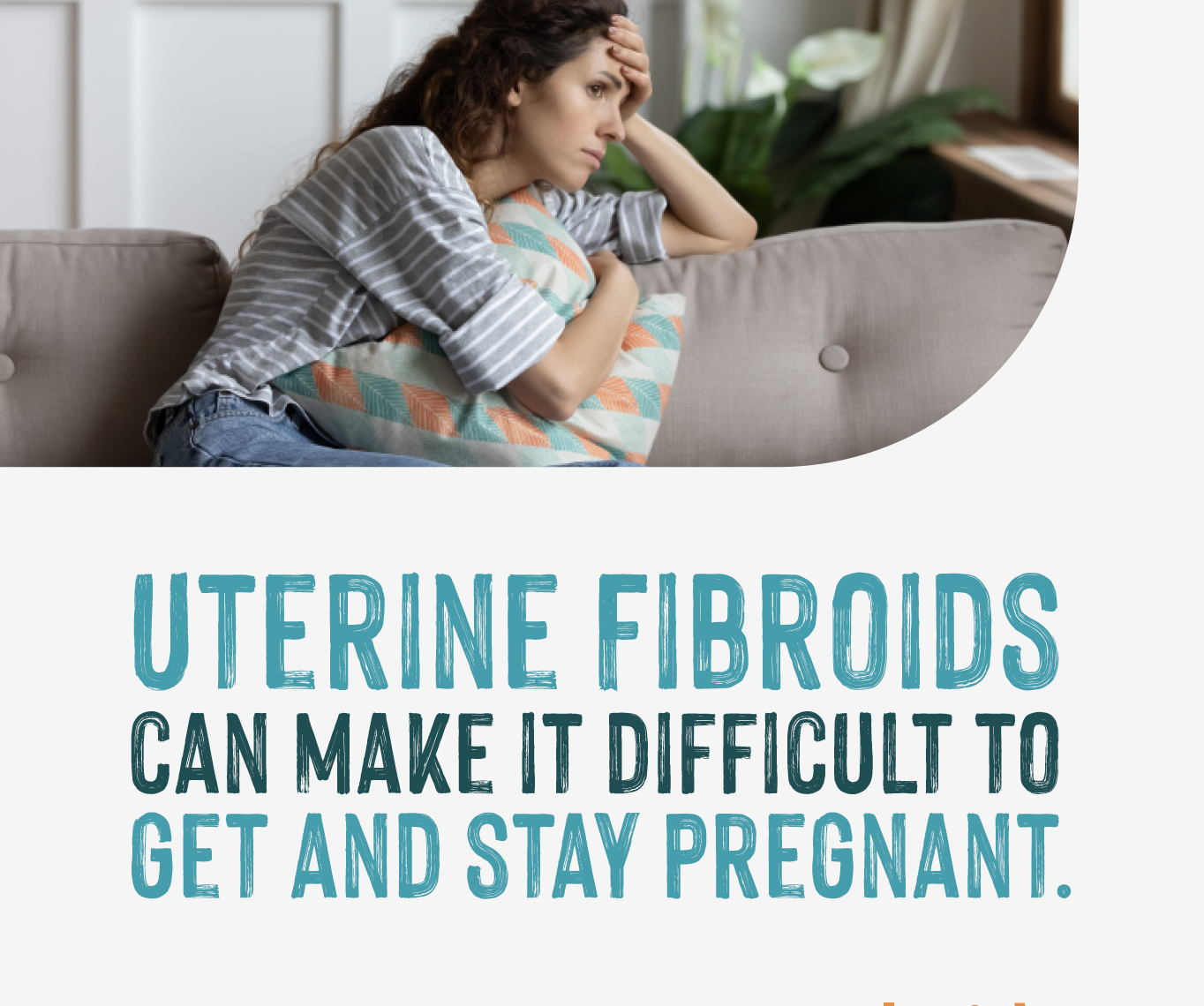It's a New Day in Public Health.
The Florida Department of Health works to protect, promote, and improve the health of all people in Florida through integrated state, county, and community efforts.
Uterine Fibroids
Uterine Fibroid
 Uterine fibroids are tumors inside the uterus that grow on the muscular walls of the uterus, and they are almost always benign (not cancerous). Less than 1 in 1,000 uterine fibroids are cancerous.
Uterine fibroids are tumors inside the uterus that grow on the muscular walls of the uterus, and they are almost always benign (not cancerous). Less than 1 in 1,000 uterine fibroids are cancerous.
Having benign fibroids does not increase the chance you will get cancer in the future.
 Fibroids can grow as a single tumor, or there can be multiple tumors. They can be as small as an apple seed, or as big as a grapefruit.
Fibroids can grow as a single tumor, or there can be multiple tumors. They can be as small as an apple seed, or as big as a grapefruit.
Many people never have symptoms, but some do. They can also make it hard to get pregnant or stay pregnant.
- Symptoms
- Risk factors
- Treatment
Abnormal bleeding
For most women, a normal menstrual period lasts about seven days, with 21 to 35 days in between periods.
Signs of abnormal bleeding include:
- Bleeding or spotting between periods.
- Bleeding after sex.
- Needing to change your tampon or pad more than once per hour during your period.
- Periods that last longer than seven days.
Pelvic discomfort
- A general feeling of heaviness, pressure, or discomfort in the pelvis or lower abdomen.
- Difficulty lying face down, bending over, or exercising without feeling uncomfortable.
Pelvic pain
- Acute: severe pain in a specific area; usually goes away on its own within a few weeks.
- Chronic: does not completely resolve itself, but tends to be more mild than acute pain.
Bladder problems
- Frequent urination.
- Waking up several times a night to urinate.
- Difficulty urinating, even with a full bladder.
Bowel problems
- Difficult or painful bowel movements.
- Frequent hemorrhoids.
Uterine fibroids are very common. Between 20% and 80% of women will have them before they turn 50.
Some factors can increase your chances of having fibroids, such as:
- Age: Fibroids are most common for women in their 30's and 40's.
- Race: Black women are three times more likely to be diagnosed with fibroids than White women. They are also more likely to get them at a younger age, and experience more severe symptoms.
- Family history: If your family members have or had fibroids, you are more likely to get them too.
- Weight: Being overweight increases the risk of fibroids, and being obese increases this risk even more.
- Eating habits: Eating too much red meat like beef or pork increases your risk, but eating lots of green vegetables can decrease your risk.
- Early menarche: Menarche refers to the first time you get your period. Early menarche is usually defined as before the age of 12, and can increase your risk of fibroids later in life.
How fibroids are treated depends on the impact they have on your life. If you don’t currently have symptoms, you may not need any treatment at all.
Medication
- If you have heavy periods, your doctor may suggest contraceptive pills or an IUD to reduce bleeding.
- GnRH agonists, like Lupron, temporarily shrink fibroids by stopping your body from producing estrogen. Lupron is typically used only before surgery to remove fibroids, especially if you have very large fibroids.
Surgery
- If you plan to have children in the future, your doctor may recommend a myomectomy. Your fibroids will be removed, but your uterus will be preserved. While it is effective, there is a chance that your fibroids can grow back.
- A hysterectomy is a major surgical procedure that removes the uterus. Many women choose this option to definitively resolve their symptoms, and prevent new fibroids from growing back.
- A relatively new procedure called uterine artery embolization (UAE) can be an alternative to major surgery for some women. Embolization stops blood flow to the fibroids, which causes them to die over time.



Connect with DOH